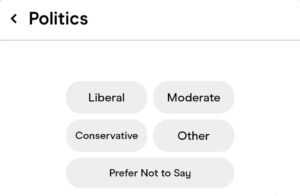Katherine Rice, a first-year Spanish teacher at the school located on the city’s South Side, received a notice dated Dec. 4 from Chicago Public Schools informing her that on Dec. 5 her position would be cut. She was to vacate her position immediately.
Interim Principal Therese D. Johnson said she was “blindsided” by the notice and did not understand why one more teacher was being cut. Already, nine teachers have been let go because enrollment at the 1,688-student school was lower than expected.
“I’m in the dark about the entire situation,” Johnson said.
Rice asked for an explanation from CPS CEO Arne Duncan on Dec. 6 during a regularly scheduled local school council meeting at Julian. Duncan attended to explain previous faculty cuts made at the school.
Duncan did not respond to Rice’s questions, and Michael Vaughan, the school district’s press secretary, could not comment.
During Thursday’s meeting, Duncan initially explained that schools lose teachers every year, about 20 a year across the district, because so many students drop out each year.
He said he would ask the district’s human resources department for a reason why Rice’s position had to be cut.
By Oct. 1, the 20th day of the school year, 12 teachers’ positions at Julian were slated to be cut due to a drop in enrollment. The school ended up saving three of those positions.
Colleen Dyaks, a grievance coordinator for the Chicago Teachers Union would not comment on why Rice’s position was cut, saying she doesn’t know Rice’s case and doesn’t want to comment on a private personnel matter.
CPS uses a system called BRACS (Budget Reconciliation and Control System) to determine a school’s “quota entitlement,” or student-to-teacher ratio. If by the 20th day of the school year, a school’s projected enrollment is inconsistent with current enrollment statistics, then positions must be cut.
Another situation that can lead to lost positions is a change in “discretionary” funding, such as for special education, which is often paid for with state or federal dollars.
If a school’s special education population drops for whatever reason and the student-to-teacher ratio is under BRACS’ formula then, at any time during the school year, a position can be cut.
“Is it best practice? No. Is it good for schools to close out positions? No. But it is legal under the school code,” Dyaks said.
State law does prevent teachers who don’t fall within the “discretionary” categories from being eliminated after the 20th day of school.
The bewildered Rice said the notice from CPS said her position – which entails teaching five classes with an average of 30 students – had been cut in September.
Spanish I is a required course for all students and many of Rice’s students are seniors. She said many of her students were meeting mastery requirements as defined by the state.
“This is at a school where people don’t think students can achieve,” Rice said with tears in her eyes. “And they have a right to an education.”
Local School Council Chairman Larry McDonald reassured Rice that the LSC would investigate.
“You are a priority,” McDonald said.
By the end of the day, Rice’s position had been saved. Rice said what worried her most, before she know she had won a reprieve, was that she wouldn’t be able to say goodbye to her students.
“Students need people who care about them and adults who are stable figures in their lives,” Rice said. “And when those people are taken away at the drop of a hat, I don’t think that’s conducive to learning or building community in a school.”
Categories:
Public Schools & Education South Side
Tags:
chicago public schools chicago teachers union julian high school






Be First to Comment